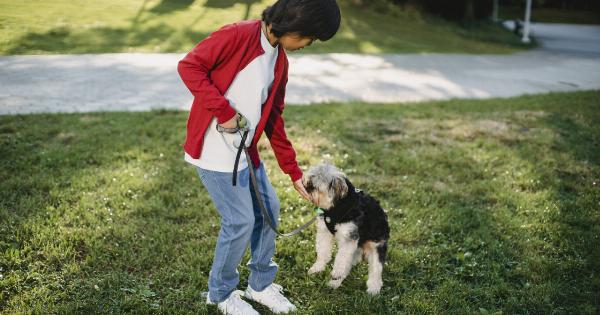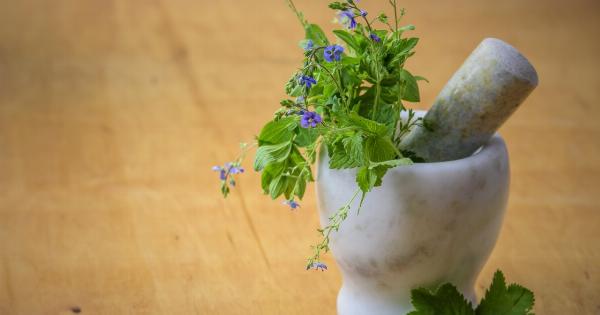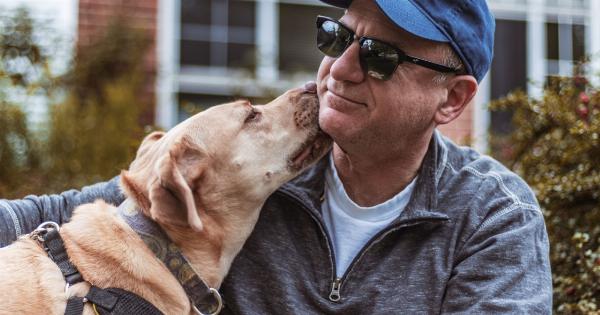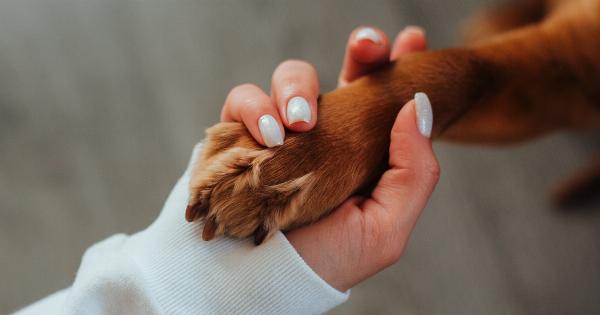As dogs age, they are prone to various health issues, including osteoarthritis. Osteoarthritis is a degenerative joint disease that causes pain, inflammation, and stiffness in the joints.
It can significantly impact the quality of life of older dogs, making it essential for owners to manage the condition effectively. In this article, we will discuss various strategies for managing osteoarthritis in older dogs, including medication, exercise, diet, and alternative therapies.
1. Understanding Osteoarthritis in Dogs
Osteoarthritis occurs when the cartilage in your dog’s joints wears down over time, leading to increased friction and inflammation. This commonly affects weight-bearing joints such as hips, knees, elbows, and shoulders.
Some common signs of osteoarthritis in dogs include limping, difficulty in standing or lying down, stiffness, reduced mobility, and behavioral changes.
2. Consult with a Veterinarian
When you suspect your dog has osteoarthritis, it is crucial to consult with a veterinarian. They can provide an accurate diagnosis and recommend the most appropriate treatment plan for your furry friend.
Your vet will likely perform a thorough physical examination, order X-rays or other imaging tests, and ask about your dog’s medical history and symptoms.
3. Medications for Osteoarthritis
Medications can play a significant role in managing osteoarthritis in older dogs. Nonsteroidal anti-inflammatory drugs (NSAIDs) are commonly prescribed to reduce pain and inflammation.
Examples of NSAIDs for dogs include carprofen, meloxicam, and deracoxib. However, it is important to consult with your vet before giving any medication to ensure proper dosage and avoid potential side effects.
4. Exercise and Weight Management
Regular exercise can help alleviate the symptoms of osteoarthritis in dogs. Low-impact exercises such as swimming and walking on softer surfaces can be beneficial.
Exercise helps maintain joint flexibility, strengthens muscles, and promotes weight management. Obesity puts additional stress on joints, worsening osteoarthritis symptoms. Therefore, a healthy diet and weight management plan, as advised by your veterinarian, are crucial for managing the condition.
5. Physical Therapy and Rehabilitation
Physical therapy and rehabilitation can assist older dogs with osteoarthritis in improving their mobility and reducing pain. Modalities such as hydrotherapy, massage, and laser therapy can be beneficial.
These therapies help increase blood circulation, reduce inflammation, and improve muscle strength. Additionally, your veterinarian may recommend range-of-motion exercises and joint mobilization techniques that can be performed at home.
6. Assistive Devices and Home Modifications
Using assistive devices such as ramps, stairs, and orthopedic beds can make a significant difference for dogs with osteoarthritis. These devices help reduce stress on joints and make it easier for your dog to navigate their surroundings.
You may also consider modifying your home environment by placing rugs or carpets on slippery surfaces to prevent your dog from falling.
7. Nutritional Supplements
Various nutritional supplements can support joint health in older dogs with osteoarthritis. Glucosamine and chondroitin are commonly recommended supplements as they help maintain cartilage and reduce inflammation.
Omega-3 fatty acids, such as fish oil, have anti-inflammatory properties and can contribute to overall joint health. It is important to consult with your veterinarian before starting any supplements to determine the appropriate dosage for your dog.
8. Alternative Therapies
In addition to conventional treatments, several alternative therapies can provide relief for dogs with osteoarthritis. Acupuncture, acupuncture, and chiropractic care are commonly used to alleviate pain and inflammation.
These therapies focus on balancing energy, reducing muscle tension, and promoting overall well-being. Always consult with a qualified and experienced practitioner in these modalities, preferably one specializing in veterinary care.
9. Environmental Considerations
Creating a comfortable environment is crucial for managing osteoarthritis in older dogs. Provide your dog with a warm and well-cushioned bed to alleviate joint pressure.
Ensure that your dog has easy access to food, water, and potty areas without needing to climb or jump. Additionally, keep your dog’s living space clean and free from any obstacles that may cause them to stumble or fall.
10. Regular Vet Check-ups
Regular visits to your veterinarian are essential to monitor the progress of your dog’s osteoarthritis treatment plan. They can make adjustments to medications, recommend additional therapies, and address any new concerns that may arise.
Your vet will also assess your dog’s mobility, overall health, and weight during these check-ups to ensure they are receiving the best possible care.






























